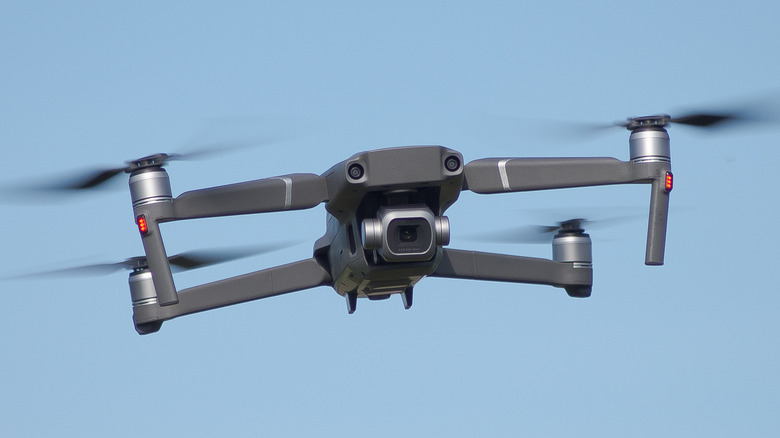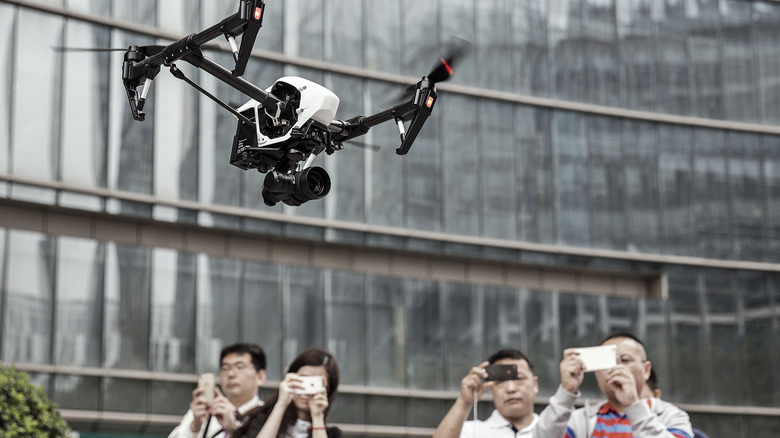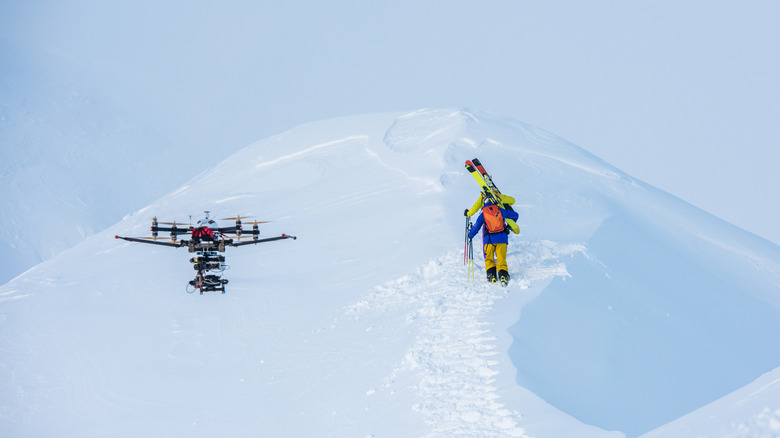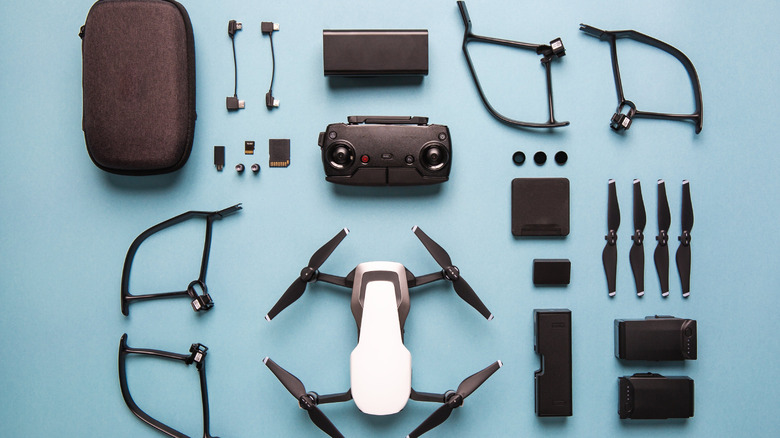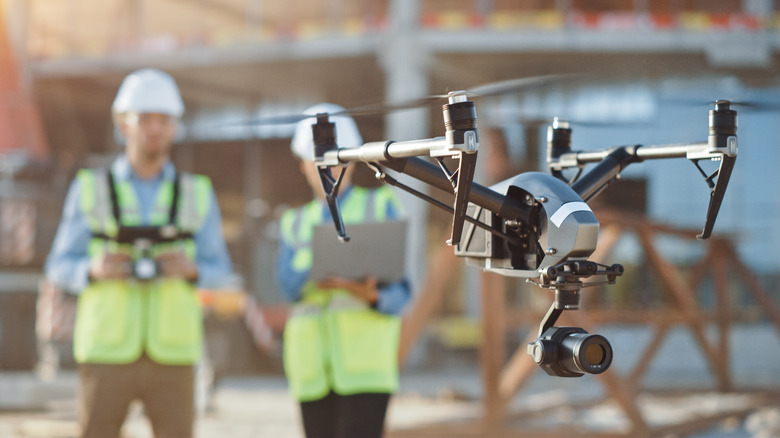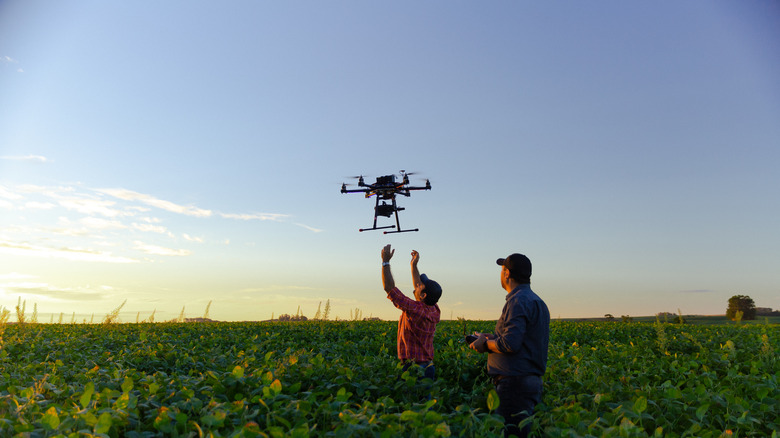5 Tips And Tricks To Maximize Your Drone's Battery Life
Through the years, drones have become increasingly accessible and affordable. However, one problem that commercial drone owners still deal with regularly is maximizing their battery life. Although there have been several innovations when it comes to wireless drone power, the reality is that most commercial drones still come with a rechargeable battery.
Often, these commercial drone batteries only have an average flight time of 10 to 30 minutes. Additionally, some top-of-the-line 4K camera drones, such as the Alpha Z PRO, can only fly for approximately 9 minutes before they need to go back down.
However, any commercial drone owner will tell you that long flight times are always better, especially when they're trying to nail that perfect shot or don't have a spare battery. Knowing this, your drone's battery life doesn't just affect the quality of your footage, but it also affects your overall flight experience. So, if you're looking for tips and tricks to extend your drone's battery life, here are some you may want to consider.
Update your drone firmware
According to DJI, one of the best things you can do to improve your drone battery life is to update your firmware regularly. Now and then, manufacturers will deploy firmware updates to help fix known issues or optimize your drone's performance, which can include battery usage.
To know if your drone's firmware is updated, you can check the manufacturer's website. Afterward, you can navigate to the most recent release notes and compare them with your drone's existing firmware. Often, you can find your drone's latest firmware status on its accompanying app.
In general, paired drones will often notify you if they require updates or automatically update once your mobile phone is connected to the internet. In some cases, drones will not be able to fly if they detect inconsistent firmware, so it's best to check your alternate batteries and those in storage as well.
If you own a battery station, such as the DJI's BS60 Battery Station, you'll also be able to update the firmware of multiple batteries simultaneously when connected to the Pilot App's health management system.
Avoid extreme temperatures
While some drones are built to withstand the elements, like snow and rain, you're still a lot better off using your drone in more manageable temperatures. Like any battery, extreme temperature changes can affect its overall lifespan and even cause safety issues.
Depending on your specific drone's battery and model, manufacturers will often include recommended temperature ranges for battery usage, charging, and storage. For example, DJI's TB60 battery, in tandem with an M300RTK drone, can operate from -4 to 122 degrees Fahrenheit. On the other hand, DJI recommends a much more limited operating temperature range for the P4 battery model with the Phantom 4 RTK Multispectral, Pro V2 at 32 to 104 degrees Fahrenheit.
Once it falls outside this range, your drone battery may still work but is prone to experiencing temporary or permanent damage. To prevent battery issues due to temperature, it's also best to invest in storage methods that isolate your drone from the elements when shooting outdoors, especially during seasons like winter or summer. In addition, you should also avoid leaving your drone and its batteries in areas that experience temperature fluctuations throughout the day, such as vehicles.
If you can't avoid using your drone in cold weather, SkyGrid recommends pre-heating your battery before every flight. Because cold weather can drain your drone battery faster, it's recommended to pre-heat your battery using a battery heater to at least 68 degrees Fahrenheit before taking off. By not doing so, you can increase the risk of your battery failing mid-flight.
Keep your battery charged during storage
Similar to other lithium-powered electronics, drones powered by lithium polymer (LiPo) batteries are best kept slightly charged at all times. To prolong the lifespan of a LiPo battery, Parrot shares that it ideally should be charged until the halfway mark.
Thankfully, smart batteries in some drone models, such as the Parrot's ANAFI series, have built-in battery capacity management features. For example, if you don't use your smart battery within 10 days, it will automatically discharge itself to 65% over 48 hours.
If you're unsure if your drone battery does the same, you may want to consider manually charging it to this level when not in use. However, it's important to note that you shouldn't charge your drone battery at all if you see signs of bloating, which is a common disadvantage for lithium-powered batteries.
In addition, Parrot also recommends storing your battery in a dry, ventilated space or a fire-retardant bag. By doing so, you can manage any potential damages if your lithium battery ever catches on fire.
Wait for the batteries to cool down
Despite being known for having some of the longest flight times among commercial drones, Autel cautions users against charging its battery immediately after a flight. Instead, Autel recommends users wait for the battery to cool down until it reaches room temperature before charging again.
Autel notes that it takes approximately 90 minutes for its batteries to fully charge. While this sounds like a long time, Autel does sell multi-charging ports, which lets you charge three EVO Nano Drone batteries at a time. So, if you're not willing to wait for its full cool-down period, you may want to consider buying multiple drone batteries as well.
In addition, Autel recommends using only its official chargers with its drones. Unlike third-party or fake chargers, chargers sold by the same manufacturer will always be tested up to standard for compatibility and safety with its specific drone model and other accessories.
Not to mention, using chargers from other manufacturers won't just put your battery at risk, but it could also affect its warranty. For example, DJI notes that it doesn't take responsibility for damages caused by third-party chargers.
Plan your drone flights better
Aside from ensuring your batteries are cared for before and after your drone flight, one typically understated way to maximize your drone's battery life is simply by being a better pilot. For example, by taking the time to better map out your routes, you can minimize unnecessary changes in altitude, speed, or even direction mid-flight. While it doesn't seem like a big deal at first, these extra wasted minutes of navigating in the air can definitely add up.
Knowing this, every minute you save through better route planning can lessen the strain of usage on your drone battery. With time, this means fewer overall charge cycles, less strain on the battery unit, and increasing your battery's lifespan along the way.
In addition, reducing the weight of your drone could also make a big difference. With a lighter overall load, your drone can fly longer because it requires less power to stay in the air. So, if you're not using all the accessories that come with your drone, you may want to consider leaving them on the ground to maximize your drone's battery to the fullest.
